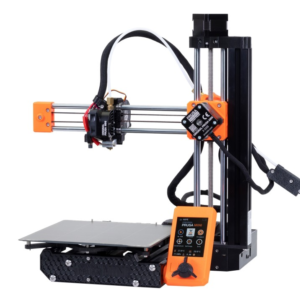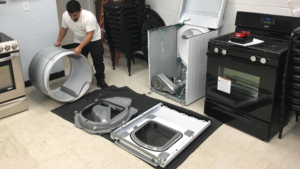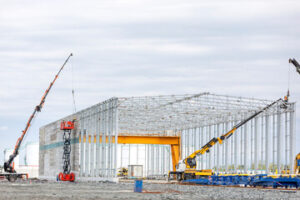Land Clearing is the process of removing unwanted trees, shrubs, and undergrowth from your property. This can be done manually or with heavy equipment such as bulldozers and backhoes.

Responsible land clearing involves ensuring that the removal of vegetation doesn’t harm the environment. This means that you should take steps to protect wildlife, the soil, and the balance of nature.
Whether you are trying to sell your property or simply enhance its beauty, a clean and manicured landscape is the way to go. Overgrown trees, weeds, and debris make your property look unkempt and unattractive. Land clearing is a vital step in transforming wild or overgrown land into usable space for construction projects, farming, or recreational activities. It also helps in preventing pests, fire hazards, and other environmental risks.
Clearing a space allows you to plant new trees, shrubs, and flowers that will add beauty and curb appeal to your property. It can also help reduce the amount of allergens in the air, which is good for people with allergies. Additionally, it prevents rodents and other wildlife from entering your home or business.
Overgrown areas provide shelter for pests, boosting their population and making them more likely to infest structures around them. This is why it’s important to clear these areas regularly. Land clearing can also reveal beautiful natural features such as streams, rocks, and unique trees that you can incorporate into your landscaping design.
Thick vegetation can obstruct the growth of different plants and trees, making them less likely to grow or survive. Clearing the land enables them to get the sun and water that they need. This is essential for ensuring that they are healthy and can thrive.
In addition, overgrown bushes and shrubs can create fire hazards. They can spread rapidly, causing severe damage to homes and businesses. Land clearing can help eliminate these safety risks by removing the dead and overgrown trees and reducing the fire risk.
Land clearing also helps in defining and maintaining property lines. This can help prevent disputes with neighbors and make it easier to manage the land.
Overgrown land is not only unsightly but can also pose a health and safety risk for residents and visitors. It can attract unwanted pests and animals, such as rats, snakes, and deers, and it may even be a habitat for diseases and viruses like mold and pollen. In addition, a overgrown area can be a fire hazard and cause property damage and injuries.
Increases the Value of Your Property
A clean, well-maintained property is a major selling point and can boost the value of your home. It is also a sign to potential buyers that you take pride in your land and have cared for it well. Having overgrown trees and shrubs can make your land look neglected and turn away potential buyers, whereas clearing it gives it an appealing, clean slate that makes it easy for them to envision how they might use it in the future.
If you’re looking to sell your land, then clearing it is an essential first step. It will help you get the best price and reduce the time your land spends on the market. Clearing also helps you comply with local zoning and environmental regulations. These guidelines can impact your property’s resale value, so following them will ensure that you don’t get stuck with fines or legal complications.
In addition to adding value to your property, clearing your land can also improve its functionality. It prepares the site for construction, landscaping, and other commercial projects by removing debris, brush, and overgrowth. It also ensures that the soil is ready to lay foundations and other structures. This allows you to build your dream house or business on the land, boosting its value.
Clearing can also increase your property’s safety. Overgrown areas are often prone to pest infestations, such as bees, hornets, and other insects that can be dangerous to people and animals. Dense vegetation provides natural shelter and food for these insects, causing them to thrive and multiply. Land clearing eliminates these pests, reducing their numbers and eliminating the danger they pose to people and animals.
Another way that clearing your land can increase its value is by making it easier to access. Overgrown areas are often difficult to navigate, especially if they’re located in a remote location. Land clearing removes obstacles like fallen trees, overgrown plants, and debris, making it more accessible for vehicles to access and people to walk through. This increases the value of your land and can attract prospective buyers who are interested in developing it or building homes on it in the future.
Stops the Spread of Diseases and Pests
Getting rid of overgrown vegetation helps to promote healthy soil. By allowing sunlight to reach the ground, it allows the grasses and other plants on your property to receive the nutrients they need. Clearing also eliminates safety hazards by removing fallen trees or limbs that could fall on cars or people.
Clearing allows farmers to plant crops or raise livestock, which in turn helps to feed the world’s growing population. Without clearing land, it would be impossible to meet the demand for food and other products that come from agricultural production.
When done improperly, land clearing can cause environmental damage. It can lead to soil erosion and habitat loss, and it can also contribute to climate change by releasing carbon stored in vegetation into the air. It is important to follow proper guidelines when carrying out land clearing projects, including obtaining necessary permits and conducting environmental impact assessments.
Hiring professionals who are experienced in land clearing can help to minimize the negative environmental impacts of your project. These experts know how to properly use specialized machinery that is safe for the environment and can handle various types of terrains. They can also perform grading, which involves levelling the land to make it suitable for construction, agriculture, or landscaping.
One of the biggest problems caused by land clearing is the spread of diseases and pests. For example, mosquitoes can carry deadly Plasmodium parasites that can lead to malaria. And while antimalarial drugs have helped to greatly reduce malaria transmission in recent decades, it is still a leading cause of death in many parts of the world, especially in Africa.
In addition to mosquitoes, wild animals can also carry infectious diseases that can threaten the health of humans. For instance, SARS and Ebola both emerged from wild animals and then jumped to human populations. Experts believe that the rapid expansion of human activity into areas with high biodiversity can increase the risk of new diseases arising from wildlife. This is why it is important to balance the need for human development with environmental conservation.
Saves You Money
Many people are surprised to find out how affordable land clearing can be. The cost of the service depends on how big the property is, how much vegetation needs to be removed, and how quickly you want to clear it. Larger plots of land require more time and equipment, which drives up the price. However, if you’re able to reuse the debris and materials that are cleared from the site, then you can reduce your costs significantly.
Another way that land clearing saves you money is by preventing the spread of diseases and pests. Diseases from one tree can easily spread to other trees through rotting wood, and pests like termites thrive in dense plant populations. Land clearing helps to prevent this by removing unhealthy plants and promoting the growth of healthy ones.
Land clearing also helps to reduce the risk of fire. Overgrown areas are more likely to catch fire, especially if the plants have dried out from heat and drought. Land clearing can help to decrease the risk of wildfire by creating a natural firebreak and removing dry twigs and leaves.
If you are planning to build a house, then clearing your land is essential. You’ll need to clear the site so that construction can begin, and it’s also important to make sure that any underground pipes aren’t covered by vegetation. Land clearing can help to save you a lot of time and stress by ensuring that the building site is ready for construction and that the utilities are properly routed.
You can hire a company to perform the clearing or you can do it yourself. There are several different techniques that can be used to clear your land, including mulching and grubbing. Mulching involves shredding the brush on-site, which can save you money on disposal costs. Other methods of clearing include chemical removal and controlled burns, which are more expensive but can be effective. You can also rent equipment such as bulldozers or excavators, or use grazing animals like goats to naturally clear brush over time. If you’re considering hiring someone to perform clearing services, be sure to discuss pricing options with them in advance so that you understand the total cost of the job. Some companies charge by the hour, while others offer more flexible pricing.








